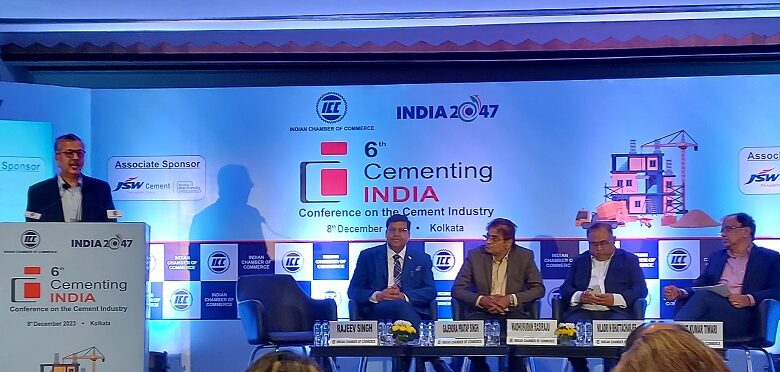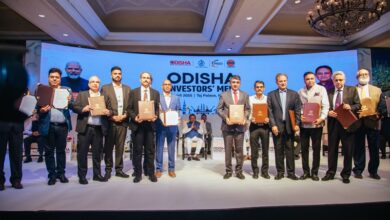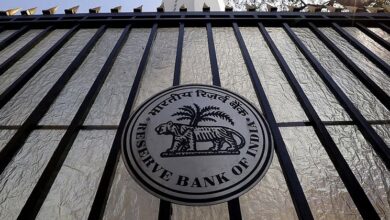Government ‘s funding initiatives can quicken evolution of Cement industry to nearly Decarbonised ” Green ” industry to meet India’s Climate Action Commitments

By : PARTHA ROY
6th Cementing India , a Conference on Cement industry was organized by Indian Chamber of Commerce (ICC) in Kolkata on 8th December 2023 to deliberate on sustainable development and transformation of Cement industry in India to nearly Decarbonized Green industry to meet India’s Climate Action Commitments.
The 6th Cementing India Conference by ICC deliberated on Decarbonisation & reimagining the net-zero transition and as well as other challenges being faced by India’s Cement industry when United Nations’ Climate Action meet COP28 is being held at UAE to deliberate on Global Challenges on Sustainable Environmental friendly development on the planet Earth.
Governments need to create “Green” fund to subsidise the Cement industry in India to quicken the transition of the industry to net-zero emission level.
Cement industry contribute in bigway in carbon emission so urgent need for Decarbonisation.
Government funding of research and technology development for modernization of various processes in Cement industry will go a longway and quicken transition of Cement industry from Carbon intensive production methods to low carbon/Decarbonised production systems. It will facililate small players in Cement industry to shift to low carbon /Decarbonised production systems.
The Conference was attended by Mr. Gajendra Pratap Singh, Joint. President – Corporate Affairs, Shree Cement Ltd; Mr. Vinit Kumar Tiwari, CEO, Star Cement; Mr. Niladri N Bhattacharjee, Partner, Grant Thornton Bharat LLP; Mr Madhusudan Rasiraju, Managing Director, IKN India; and Dr. Rajeev Singh, Director General, Indian Chamber of Commerce, along with other industry stalwarts, who deliberated on various challenges .
Shri Rajeev Singh Director General of ICC, , in his inagural address said, “ Cement plays a vital role in building our economy. It has potential to contribute to tax generation and foreign direct investment. Nonetheless, cement is a primary source of carbon emissions. Countries are pledging to cut down emissions and the indigenous industry is actively taking steps for mitigative strategies. Reduction in CO2 emission is a huge process and the industry is reliant on using technologies in the practice. In recent years, it has seen an increase in green financing too. The industry is focusing on sustainability strategies and goals too.”
Shri Gajendra Pratap Singh of Sree Cement, said, “The industry is in full swing to become sustainable and achieve zero carbonisation. It is focusing on the country’s climate and Green agenda along with technological innovation, which is key to achieve the goals. With the rise in CO2 emissions, sustainability has a very important role to play in days to come. As a leading player in the industry, Shree Cement has undertaken numerous measures towards achieving the industry’s sustainability goals. We have started utilising synthetic gypsum instead of mineral gypsum. As a nation, we have progressed a lot but there is still room for improvement.”
Shri Vinit Kumar Tiwari of Star Cement said , “In response to rising global temperatures and its environmental impact, a greener and sustainable future has become a sounding call. Our country sits as a cornerstone for international collaboration in the global context……The transition from fossil fuels to renewable energy within the sector has helped bolster de-carbonisation goals.”
Shri Niladri Bhattarcharjee said “The global cement industry is the third largest energy consumer and second largest carbon emitter. Comparatively, India’s average statistics are better than the global average. Nonetheless, there is room for improvement. The structure of the homegrown cement industry is such that large players will spearhead the adoption of changes. Customers will become sensible and demand greener commodities in the future. Therefore, we have a responsibility to carry out. While India aims to achieve Net Zero by 2050, the cement industry also has to play its part by coming up with different solutions such as waste recovery …. Modernisation of various relevant facets of Cement industry’s to increase efficiency will facililate de-carbonisation. ….So, we still have a lot of space for improvement.”
Madhusudan Rasiraju of IKN India, said, “India has to invest in infrastructural spending to reach its goals. Apart from the cement industry, we need steel, water and other resources to be recycled and reused……and also help reduce the use of fossil fuel-derived energy drastically.”
Earlier commenting on prospect of Cement industry, on 7th December 2023, India’s top industrialist Shri Gautam Adani Chairman of Adani Group posted on his social media X handle ” Ambuja & ACC are leading a sustainable revolution in the cement industry. Over 90% of our cement production is now blended cements recycling waste fly ash and slag. This significant shift not only enhances the environmental footprint of our cement but also marks a substantial step towards sustainability. Additionally, we are committed to powering 60% of our cement production with renewable energy sources by 2028. This ambitious goal will establish us as a frontrunner in the global arena of sustainable cement production…. #COP28 “
(This story has not been edited by News Mania staff and is published from a Media Release)






